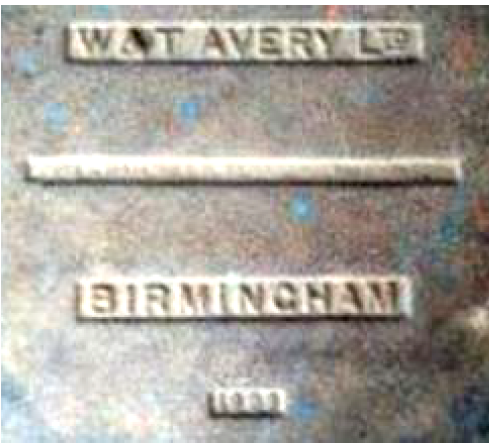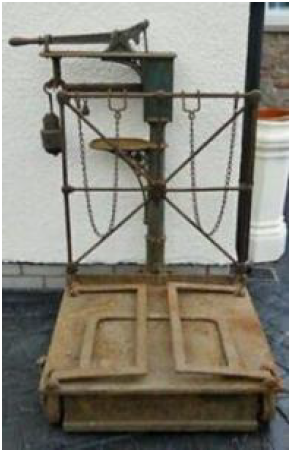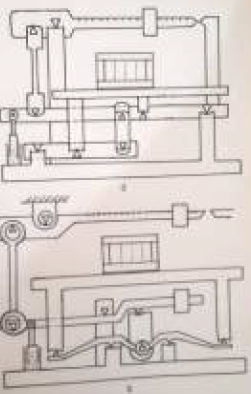Thaddeus and Erastus Fairbanks’ agents took out a British patent for a compound lever scale in 1833.
However, it was declared invalid when English scale makers proved that the invention had been in use
for a number of years.
In the year 1730, in the Birmingham street called Digbeth, there lived one James Ford who made steelyards. All his work was done by hand; machinery was at the time unknown in this trade. In this humble domestic workshop, the business then conducted by W.&T.Avery Limited began.
In the year 1730, in the Birmingham street called Digbeth, there lived one James Ford who made steelyards. All his work was done by hand; machinery was at the time unknown in this trade. In this humble domestic workshop, the business then conducted by W.&T.Avery Limited began.
Ford died in 1761 and the business passed through the hands
of James several family connections until it came under the
control of William and Thomas Avery in 1818. In their
hands, it began to grow from a purely local concern trading
with Midland people and a few travelling merchants into a
nation wide and finally world-wide organization. New types
of scales were made and new markets found. In 1894, the
business was formed into a Public Limited Liability
Company. The Avery business in India was originally
conducted through London export houses and in 1947, this
organization which had been operating as branch of W.&T.
Avery Limited was established as a separate Indian company
under the title of The Avery Company Limited.


Platform scales were originally fitted with loose – weight steelyards and
with these, the major portion of the load is balanced by loose proportional
weights and a small sliding poise serves to balance and indicate the odd
pounds and ounces.
No-loose weight steelyards were introduced later and fitted to platform scales and weigh bridges. In these, a major poise balances the greater part of the load such as tons and the smaller sliding poise serves to balance the remaining smaller portion of the load.
No-loose weight steelyards were introduced later and fitted to platform scales and weigh bridges. In these, a major poise balances the greater part of the load such as tons and the smaller sliding poise serves to balance the remaining smaller portion of the load.

COMPOUND LEVER BALANCES
A combination of Roberval system and steelyard was used frequently for
commercial weighing. Basic structure of two such weighing machines is shown
in figures.
In the first figure, equal arm beams are employed and in the second, unequal
arms are used to obtain mechanical advantage.
The systems used for the scales, so far mentioned, is for the non – self
indicating scales.
Non-self – indicating weighing Scales are weighing instruments for which the
equilibrium position is obtained totally by the operation of the user.
The progression of the weighing scales obviously didn’t stop with the non – self indicating scales.

SELF-INDICATING SCALE
A self-indicating scale is capable of balancing a load automatically and giving an indication of its
weight, without the operator having to manipulate weights, proportional weights or sliding poise.
These scales, in many forms and now in digital display, are indispensable to modern commerce.

The first records of the invention
of the self-indicating scale were
made by the universal genius of the
15th century,Leonardo da Vinci,
whose paintings ” The Last Supper ”
and ” Mono Lisa” are world famous.
His notebooks which were compiled
over a period of forty years,
contain sketches and description of
two self-indicating weighing mechanisms,
similar in principle, one being semi-circular
form and the other triangular.

